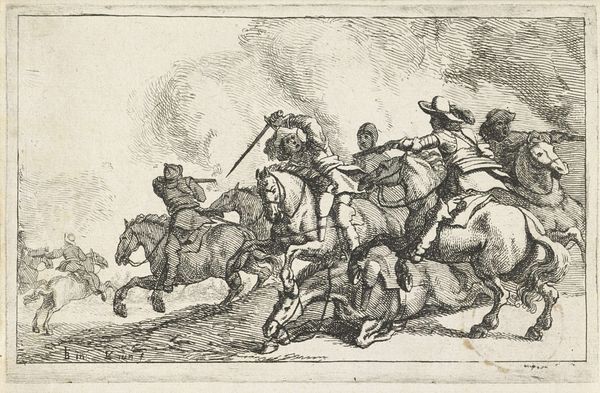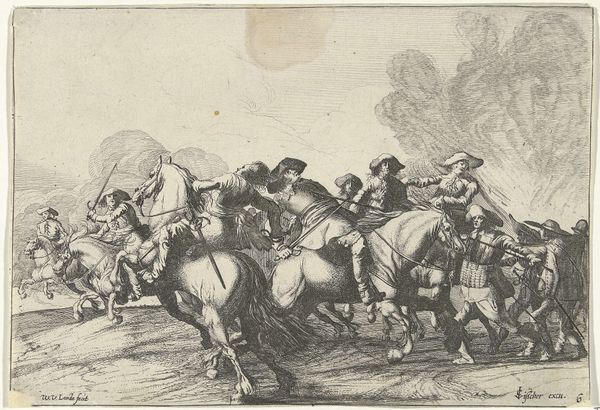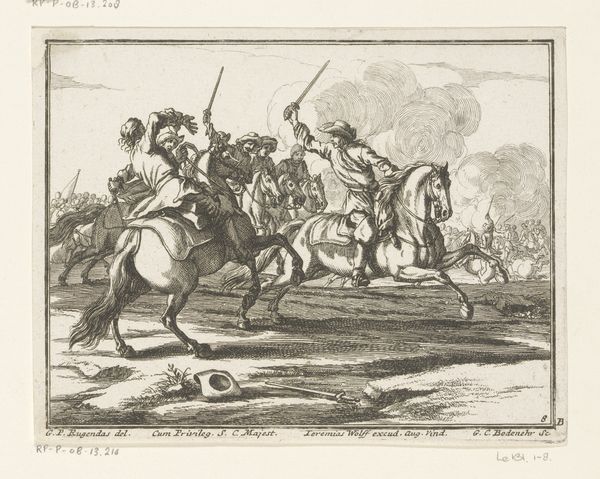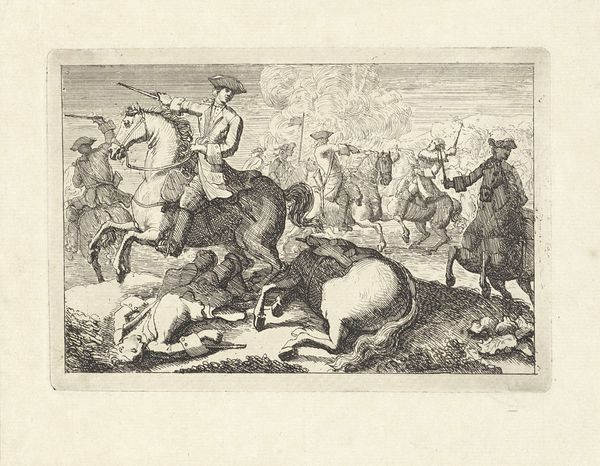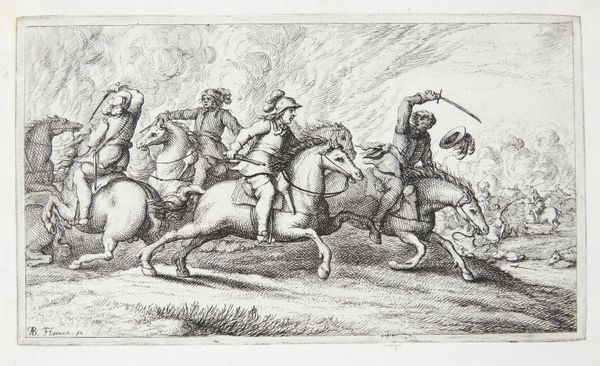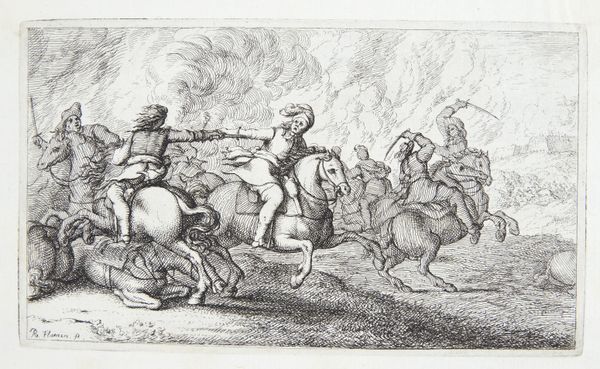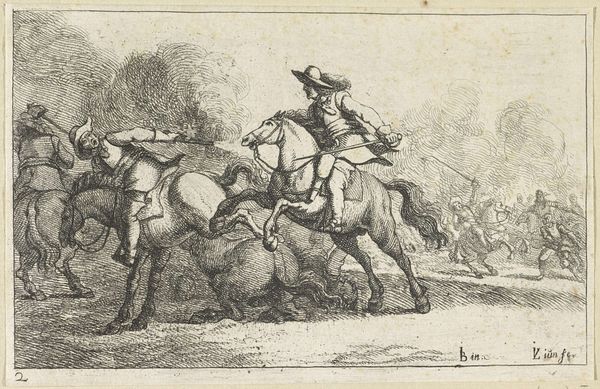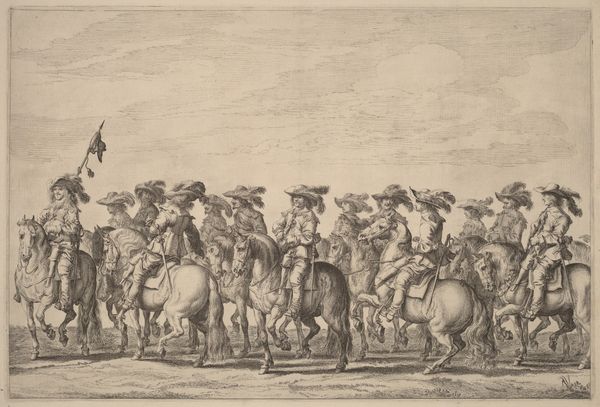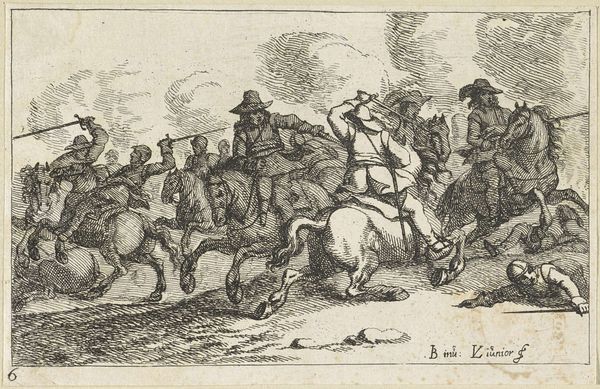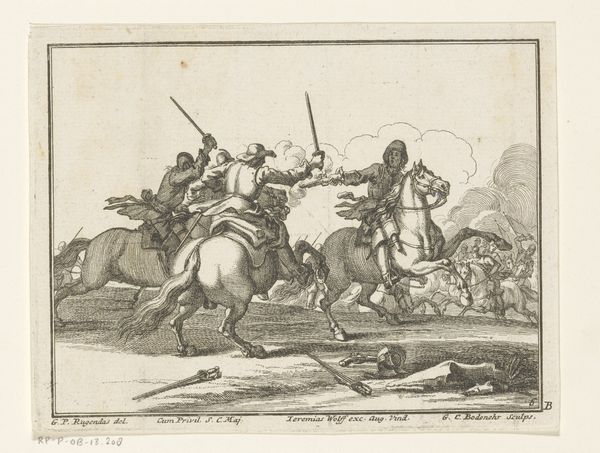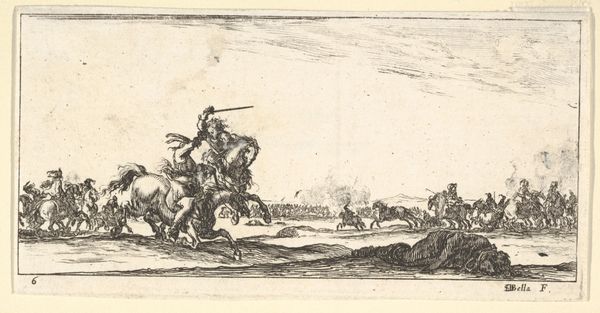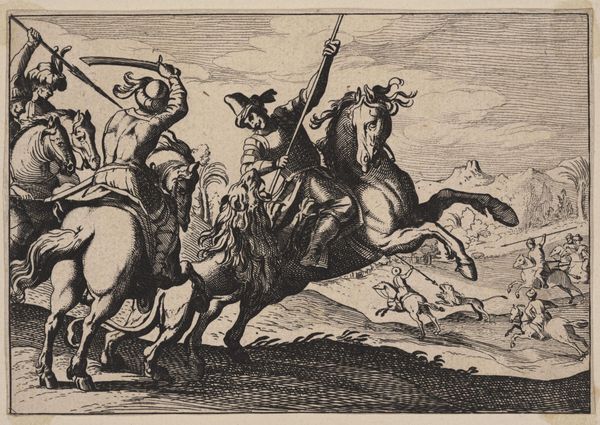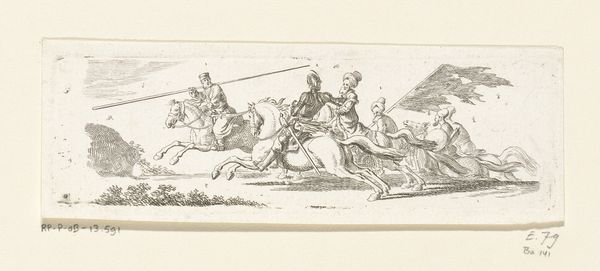
#
light pencil work
#
quirky sketch
#
pen sketch
#
pencil sketch
#
personal sketchbook
#
sketchwork
#
pen-ink sketch
#
sketchbook drawing
#
storyboard and sketchbook work
#
sketchbook art
Dimensions: height 138 mm, width 202 mm
Copyright: Rijks Museum: Open Domain
Curator: Let’s turn our attention to this compelling sketchwork titled “Slagveldscène met neergestoken ruiter” – we know it as "Battle scene with stabbed rider"—attributed to Willem van Lande, possibly created sometime between 1635 and 1751. What are your immediate impressions? Editor: Chaos, really. A frenetic, almost panicked energy conveyed through these thin, agitated lines. It feels incredibly dynamic, all these bodies in motion—horses, riders, implied violence... unsettling. Curator: Indeed. Observe how van Lande orchestrates this sense of movement and drama. The composition relies heavily on diagonal lines, leading the eye across the field of battle, a clear deployment of dynamic symmetry principles. And, notice the varying line weights; they add depth. Editor: The line weights also evoke different social positions. It is fascinating to think of the battlefield in terms of social stratification, with soldiers on horseback at a literal height advantage relative to their contemporaries. Their class shields them, enabling acts of sanctioned violence during battle. Curator: A point well-taken! Considering it a 'personal sketchbook' piece also makes me reflect on its incompleteness. It is in these unfinished gaps and voids that the structure makes its appeal—in its raw form it reveals the artistry required to achieve visual balance. Editor: I see that, though I read these ‘unfinished gaps’ through a sociopolitical lens, they offer a critical, potentially even anti-war commentary. Perhaps these "unfinished gaps" represent all those unrepresented by battles, people who might prefer domestic activities to joining their peers on the field. Curator: Perhaps... however, this focus on negative space also encourages viewers to complete the image in their minds. That interplay between presence and absence activates a powerful cognitive engagement. Editor: But who gets to complete this picture, right? I wonder how historical factors like widespread colonial aggression and male-dominated trade in Europe would affect someone interpreting violence on such a scale. Curator: A lot to consider—this detailed rendering allows the artist and viewers to be present as witnesses within an action they might find both frightening and invigorating. It's an intriguing balance. Editor: Absolutely. Van Lande's sketch urges a complex, multi-layered understanding of its historical setting, as it invites viewers to reflect critically on the causes and implications of societal aggression and military-civilian power dynamics.
Comments
No comments
Be the first to comment and join the conversation on the ultimate creative platform.
